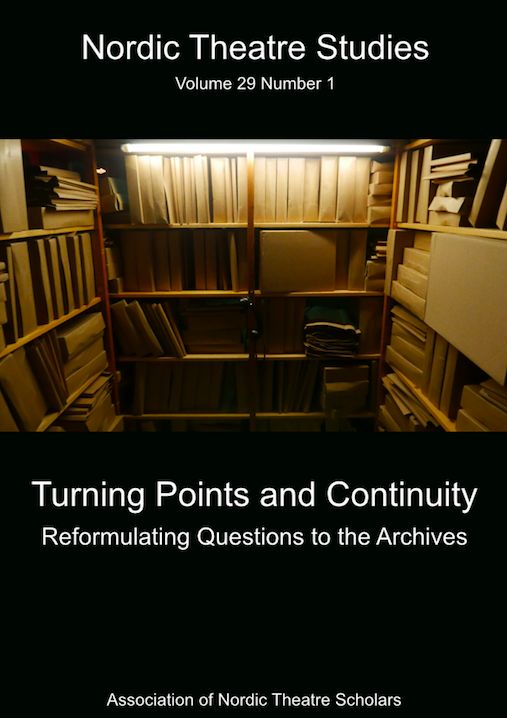History Repeating Itself. The function of turning points and continuity in three historical narratives on operetta
DOI:
https://doi.org/10.7146/nts.v29i1.103311Keywords:
Operetta, historiography, postnarrativity, turning points, continuityAbstract
The article’s primary aim is to discuss the function of turning points and continuity within historiography. That a historical narrative, produced at a certain time and place, influence the way the historian shapes and develops the argument is problematized by an emphasis on the complex relationship between turning points and continuity as colligatory concepts within an argumentative framework. Aided by a number of examples from three historical narratives on operetta, the article stresses the importance of creating new narratives about the past. Two specific examples from the history of operetta, the birth of the genre and the role of music, are used to illustrate the need to revise not only the use of source material and the narrative strategy used, but also how the argument proposed by the historian gathers strength. The interpretation of turning points and continuity as colligatory concepts illustrate the need to revise earlier historical narratives when trying to counteract the repetitiveness of history.
References
Ankersmit, Frank. 2017. “Forum Debate on Jouni-Matti Kuukkanen’s Postnarrativist Philosophy of Historiography”. Journal of the Philosophy of History 11:1, 1-10, DOI: 10.1163/18722636-12341360.
Bergman, Gösta M. 1966. Den moderna teaterns genombrott 1890-1925. Stockholm: Bonnier.
Canning, Charlotte & Postlewait, Thomas (eds.). 2010. Representing the past: essays in performance historiography. Iowa City: University of Iowa Press.
Haslum, Bengt. 1971. Operett och musical: en kavalkad i ord och bild från Offenbach till vår tids musical. Stockholm: Sveriges radio.
Kuukkanen, Jouni-Matti. 2015. Postnarrativist philosophy of historiography. New York: Palgrave.
Kuukkanen, Jouni-Matti. 2015. “Why we need to move from truth-functionality to performativity in historiography”. History and Theory 54:2, 226-243, DOI: 10.1111/hith.10755.
Lamb, Andrew. 2000. 150 years of popular musical theatre. New Haven: Yale Univ. Press.
Postlewait, Thomas. 1991. “Historiography and the Theatrical Event: A Primer with Twelve Cruxes”. Theatre Journal 43:2, 157-178.
Shaw, Ryan Benjamin. 2010. Events and Periods as Concepts for Organizing Historical Knowledge. UC Berkeley: Information Management & Systems. Retrieved from: http://escholarship.org/uc/item/4111f1fw.
Traubner, Richard. 1990. Operetta: a theatrical history, [New ed.]. Oxford: Oxford Univ. Press.
Downloads
Published
How to Cite
Issue
Section
License
The copyright belongs to the authors and Nordic Theatre Studies. Users can use, reuse and build upon the material published in the journal but only for non-commercial purposes. Users are allowed to link to the files, download the files, distribute the files on a local network (preferably by links), upload the files to local repositories if their institutions require them to do so, but not republish the files without proper agreements with the journal and the author.

